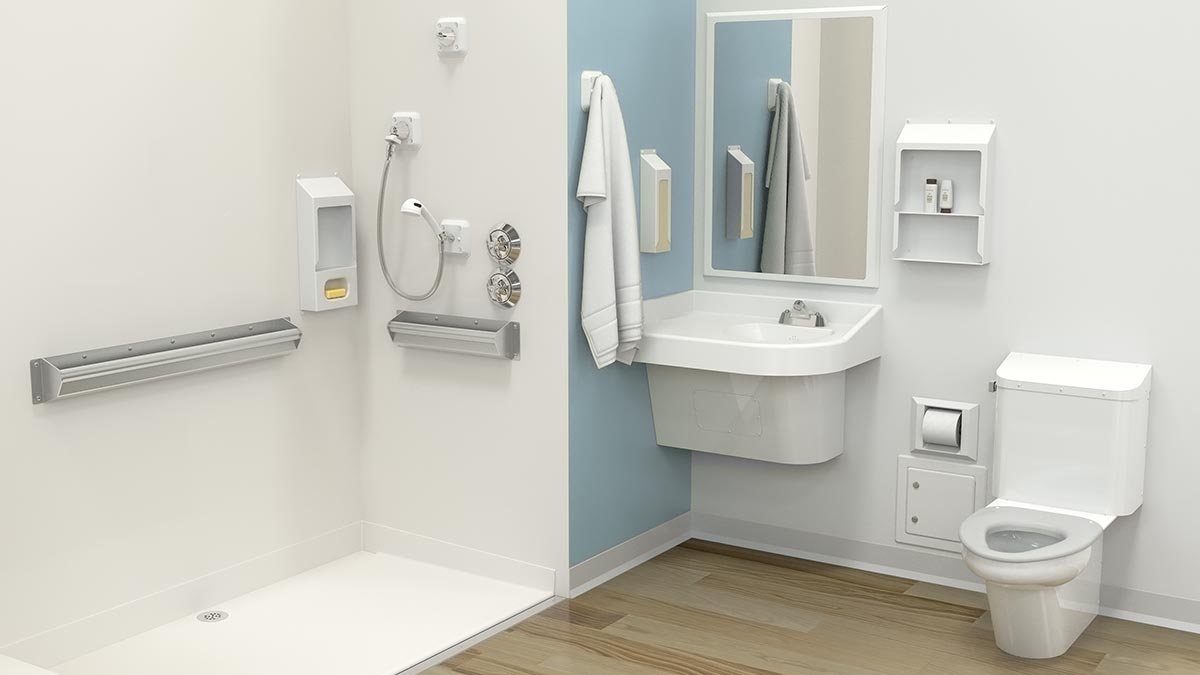
When June walks into her bathroom at the mental health facility where she is a patient, her very life is at risk.
Everywhere she turns there is a potential weapon she could use to end her life—everyday objects that, when viewed by those of us who are less vulnerable, seem completely non-threatening. But to June these objects may as well be a fistful of pills.
When an architect is charged with designing a behavioral healthcare facility they face a unique challenge. They must create an atmosphere that is aesthetically pleasing and welcoming. It needs to support the healing process and, perhaps even more importantly, it must keep those most vulnerable safe.
Architects and designers are in their comfort zone when it comes to the first two of these criteria. It is that last point, a safe place, that is often difficult. It is hard for many to imagine themselves in a state of mind like June’s where everyday common objects become a weapon that could be used to take your own life. But this is exactly what facilities, their patients, and their patients’ families and loved ones need the architect to do when envisioning the design.
A study on inpatient suicide in Department of Veteran Affairs (VA) hospitals found that hanging was the most common method of inpatient suicide, accounting for 43 percent.
When we hear the term hanging we immediately look to the ceiling trying to identify potential hazards. Consider that the VA found that 50 percent of all hanging suicides have a ligature point below the head. Thus, it is important for facilities and their architects to identify those anchor points below the head or even close to the floor.
In other words, the toilet you choose is as important a consideration as the shower head. The flush valve is as important a decision as the locks on the patient room doors.
These considerations are sadly also required of those who design any type of healthcare facility. Many individuals who have attempted suicide are frequently taken to a general hospital first for immediate care.
It’s important to note that according to the Joint Commission (PDF), many patients who kill themselves in a general hospital inpatient unit do not have a psychiatric history or a history of suicide attempts.
- 14.25 percent of reported incidents occurred in the non-behavioral health units of general hospitals
- 8.02 percent occurred in the emergency department
- 2.45 percent occurred in other non-psychiatric settings (home care, critical access hospitals, long term care hospitals, and physical rehabilitation hospitals)
Today’s architects and facilities are in a better position than ever to lower the incidents of suicide. One reason is awareness. As more and more agencies and facilities conduct studies and share information with one another, they continue to learn and improve.
Another reason is that more and more products are being created to improve safety for at-risk patients. Whitehall’s BestCare® products are designed to meet the unique application challenges faced by behavioral healthcare facilities seeking to maintain the balance between patient safety and security.
At the same time, we understand how important a welcoming and pleasing atmosphere is to a patient’s healing process. The BestCare family of products minimizes ligature points while being stylish and functional. We, like you, want a safe environment to be a beautiful environment, as well.
